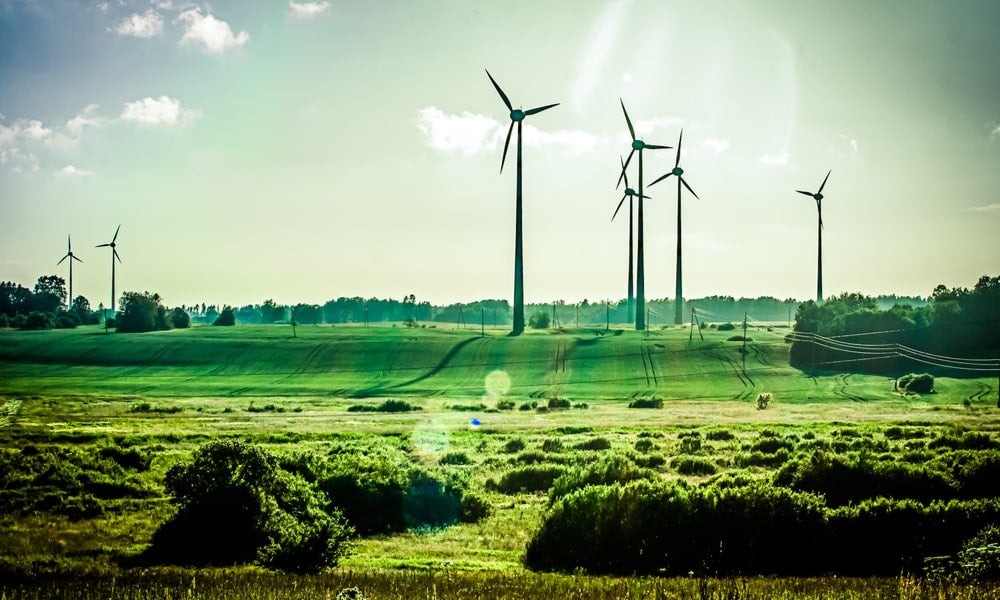How organisations can fulfill their quest for cleaner business models
Organisations can adopt cleaner business models through utilising green dynamic capabilities, decarbonisation and regenerative systems, write Sandor G. Lukacs de Pereny and Gavin Schwarz
Businesses require tangible and intangible resources and energy to operate; that is, to extract, transport, transform and manufacture a wide array of materials, goods, and products. In fact, the Organization for Economic Co-operation and Development (OECD) (2018) forecast that by 2060 global demand for tangible resources will reach 167 gigatons compared to 79 gigatons consumed in 2011.
Resource consumption nevertheless also implies an output of significant amounts of solid, liquid, and gaseous wastes. Likewise, resource extraction, transportation, transformation, and manufacturing activities are considered responsible for 70 per cent of all greenhouse gas emissions.
According to the United Nations, by 2050 the world’s population will increase by 40 per cent from 7 billion to 10 billion inhabitants. More people imply more needs (such as food, shelter, energy) and more needs will urge businesses to consume additional resources to meet the globe’s growing population’s demands. Notwithstanding, it also means a significant waste generation increment. In this respect, the World Bank predicts that by 2050 human activities will generate 3.4 billion tons of waste per year. In such a future scenario, however, businesses will be forced to continuously adjust the ways in which they operate as to reduce their carbon dioxide (CO2) equivalent emission footprints. Such external pressures will stem from society’s rising environmental concerns and governments stringent environmental regulations.

Reducing and reversing environmental damage as well as promoting ecosystems’ regeneration stand as societal grand challenges. Specifically, societal concerns linked to environmental pollution exert considerable pressure on both governments and businesses. Consequently, the former ends up by designing and enforcing stricter environmental regulations affecting the latter’s ability to operate their supply chains, production processes and investment decisions, just to mention a few managerial implications.
It should also be noted that environmental concerns and regulatory mechanisms are dynamic meaning that they are continuously evolving in time. Put differently, the role of businesses is perpetually redefined by social claims, media pressure, and regulatory limitations. Businesses must thereby ‘mutate’ to survive or flourish in their respective environments. Nevertheless, to do so, they must acquire diverse organisational capacities allowing them to either modify, alter, adjust, or innovate their resource extraction, transportation, transformation, and manufacturing practices including their waste management systems. In short, businesses generating high carbon outputs need to adapt to new cleaner conditions imposed by a greener global economy.
Read more: Unilever’s CEO Nicole Sparshott: why sustainability makes good business sense
Decarbonising businesses
A green economy can be defined as a low-carbon economic model characterised by efficient use of energy and tangible resources. It is also a socially and environmentally responsible economic model as it incorporates ecosystems protection and preservation as a non-negotiable operational mandate. Global environmental pollution can therefore be measured by assessing the concentration levels of carbon emissions generated by human activities. For example, in the early 19th century (pre-industrial revolution) global carbon dioxide concentration levels were around 278 particles per million (ppm).
However, with the industrial revolution and our subsequent dependence on fossil fuels, carbon emissions surpassed the 400 ppm milestone in 2013. Moreover, in the past 30 years global carbon dioxide per capita generation augmented from 3.85 tons (1990) to 4.36 tons. The reason for this is that most of the developing world economies are still heavily reliant on fossil fuels as their main source of energy. This may also answer why the past COP26 failed at reaching global consensus on fossil fuels and allied decarbonisation targets. Hence, paving the road to business decarbonisation requires both small entrepreneurs and large corporations to develop or acquire green dynamic capabilities.

The incorporation of green dynamic capabilities
Green dynamic capabilities refer to the ability an organisation has to either exploit or renew those organisational capacities it assesses as useful or necessary to respond to multiple societal and government environmental needs, expectations and requirements. For instance, a manufacturer incorporating eco-design criteria in their products in keeping with a greener supply chain (for example, low fossil fuel consumption, less waste generation) is highly likely to meet societal needs and expectations as well as comply with regulatory requirements. In other words, the incorporation of green dynamic capabilities stems from a business’s strategic needs.
Examples of green dynamic capabilities include but are not limited to eco-designing, life cycle assessment, green procurement, reverse logistics, reverse vending, industrial ecology, nature-based solutions, composting, recycling (including upcycling/downcycling), eco-innovations, circular economy, and waste-to-energy.
The aforementioned concepts, methods, processes, and systems are management tools blending technical expertise with operational capacities that have proven to be effective for decarbonising purposes. For example, Accenture estimated that implementing a circular economy model could free up an extra $4.5 trillion to the global economy by 2030. Similarly, an OECD report indicated that the circular economy could also have the potential to create 18 million new direct jobs by 2040. Accordingly, The Circularity Gap Report pointed out that the adoption of various dynamic green capabilities could help reduce greenhouse gases (including carbon dioxide and methane) by 39 per cent by 2032. Yet, perhaps the most outstanding emerging contemporary paradigm in the business world is the concept related to regenerative business models.
Read more: Three key ways to future-proof business against climate change
Regenerative business models: a rising business paradigm
A regenerative business model is a business approach that takes responsibility for curating, renewing, or restoring a specific ecosystem in which it operates or where there is any direct or indirect environmental impact. It also refers to a business approach that helps improve a specific ecosystem’s resilience thus allowing it to heal, renew, or restore itself. Therefore, this model can be understood as a business’s effort to either remedy or rectify the damage caused to the natural environment.
The regenerative business model paradigm has also been gaining momentum to the detriment of the (still dominant) sustainability approach. For instance, one survey found that 80 per cent of consumers preferred regenerative business model brands over ‘sustainable brands’ as the latter were perceived as being ‘too passive’. Currently, several large corporations have already taken the lead by implementing a regenerative business model management lens. For instance, Patagonia co-founded the Regenerative Organic Certified Initiative while also actively fighting for animal welfare, defending equity for farmworkers, and following high standards regarding responsible farmland rotation and management.

General Mills and PepsiCo share regenerative business model-inspired agriculture programs such as One Million Acres by 2030 and Seven Million Acres by 2030. Retail giant Walmart has set itself very ambitious regenerative business model goals, namely the Zero Emissions by 2040 and 50 million acres of land and one million square miles of restored ocean by 2030 projects.
The previous set of examples shed light on how many global businesses have taken a more active and accountable role in the preservation of the environment by ‘greening’ their operations and processes. It seems too that some business managers have comprehended that societal pressure and environmental regulations will continue having an even stronger influence on their ability to run their businesses. Proof of this is that several companies have shown a marked interest in developing or acquiring diverse dynamic green capabilities to redress challenges restraining their businesses' operability.
Business decarbonisation for a cleaner global economy urges strategic leadership, transparency and innovation. Incontestably, business decarbonisation also necessitates measurable and verifiable actions enabling responsible profit generation and shared value creation. Perhaps the era of good intentions may have come to an end.
Gavin Schwarz is a Professor in the School of Management & Governance at UNSW Business School and Director of the Health@Business Research Network. Sandor G. Lukacs de Pereny is a researcher at ESAN Graduate School of Business in Peru and also completed his Ph.D. at UNSW Business School.
